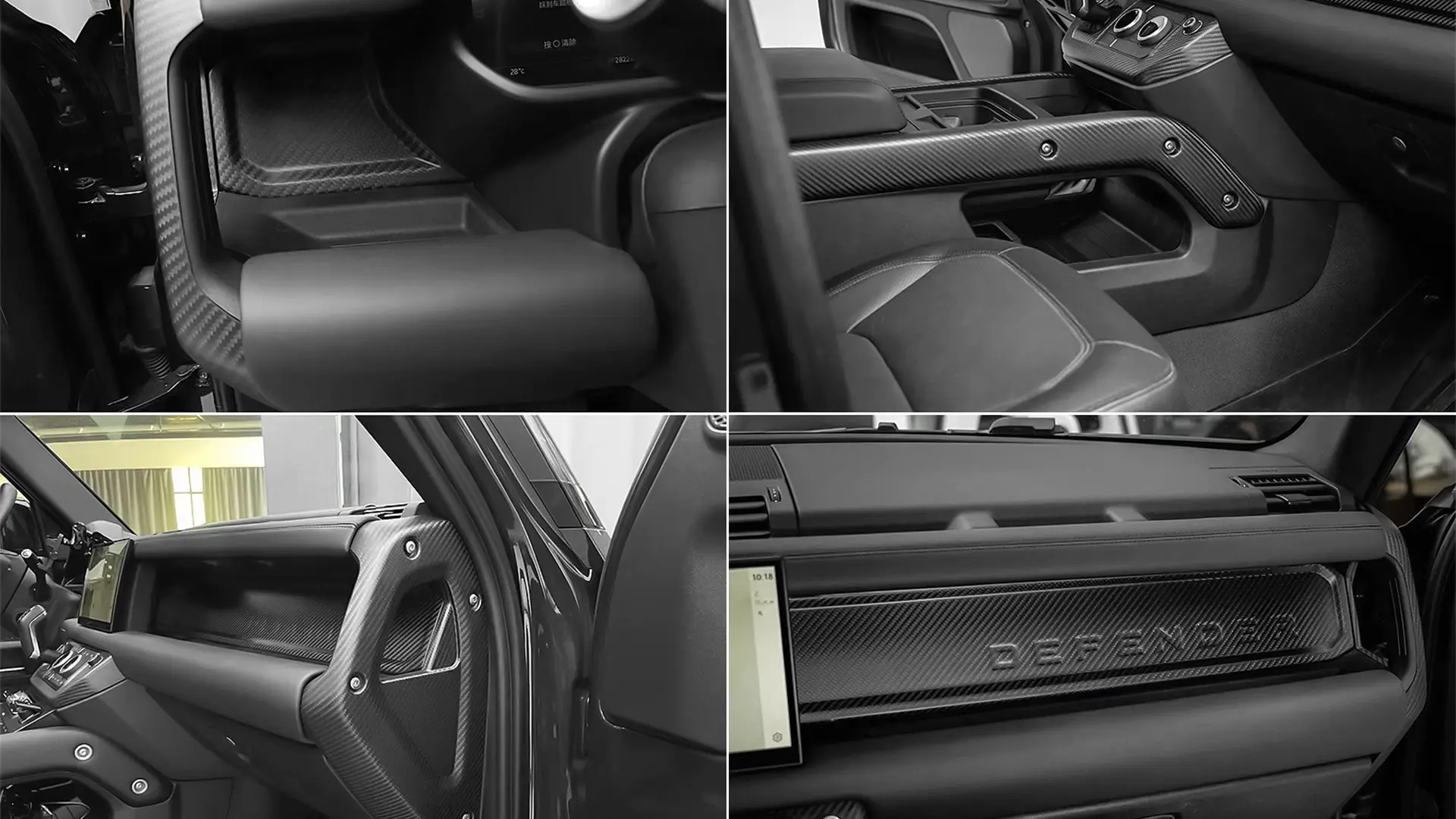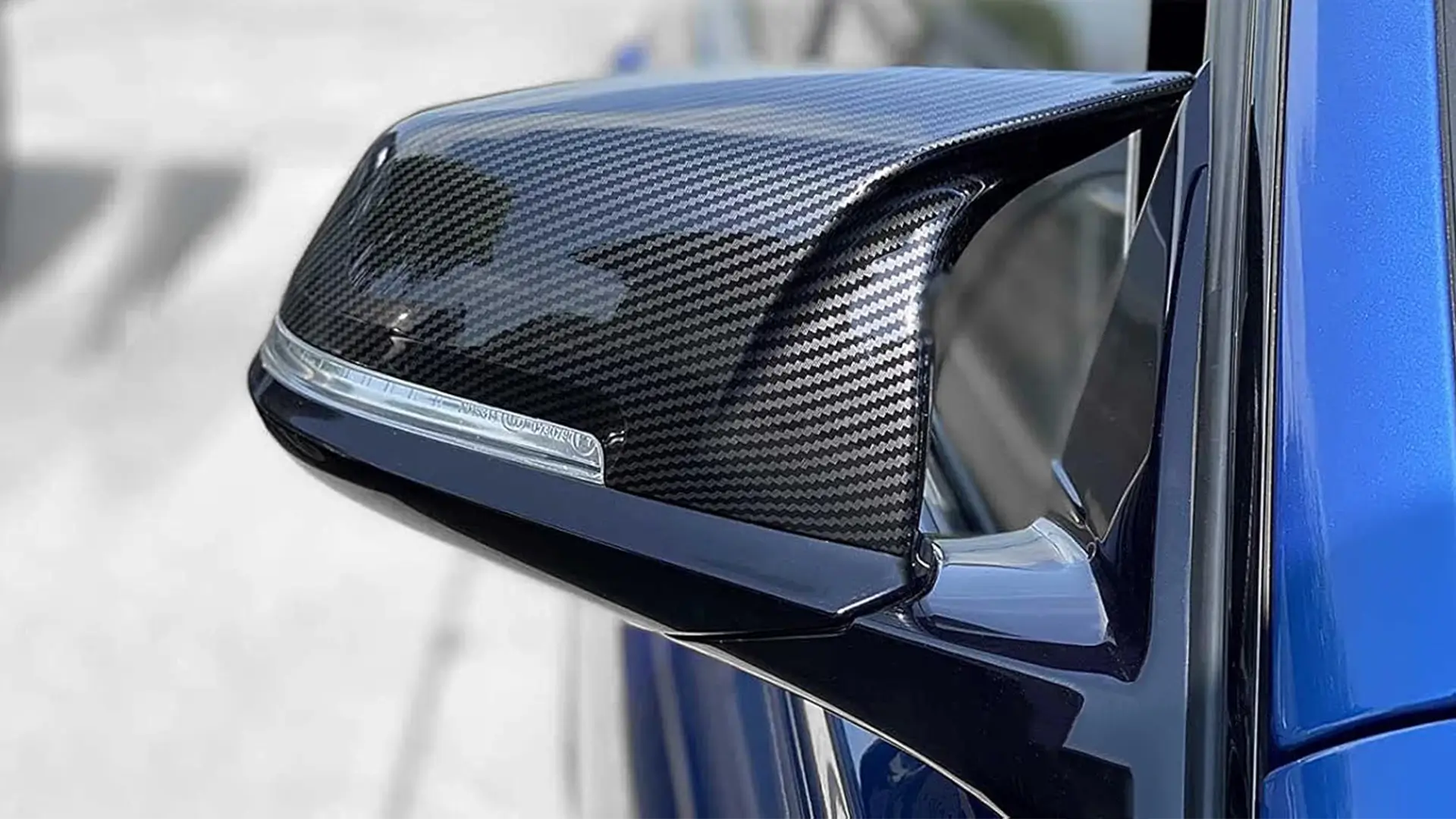The Role of Carbon Fiber Interior in Modern Vehicles
A carbon fiber interior enhances both the performance and aesthetic value of vehicles. Carbon fiber interior trim, such as dashboard panels, door accents, and center consoles, reduces weight compared to traditional materials like wood or metal, improving fuel efficiency and handling. A car carbon fiber interior also provides a sleek, modern appearance that appeals to luxury and performance vehicle buyers. These components must meet stringent requirements for precision, surface quality, and durability, making the choice of manufacturing method a critical decision.
For B2B clients, including automotive OEMs, aftermarket suppliers, and luxury vehicle customizers, factors such as production volume, part complexity, budget, and aesthetic goals influence the selection of a manufacturing process for a carbon fiber car interior. Below, we examine four industry-standard methods—hand layup with vacuum bagging, resin transfer molding (RTM), autoclave molding, and compression molding—detailing their processes, advantages, limitations, and ideal applications to guide clients in making informed choices.
1. Hand Layup with Vacuum Bagging for Custom Carbon Fiber Interior
Hand layup combined with vacuum bagging is a versatile and cost-effective method for producing carbon fiber interior components, particularly suited for low-volume or highly customized projects.
Process Overview
Technicians manually layer carbon fiber fabric into a mold, applying resin to bond the fibers. The mold is then sealed in a vacuum bag, which extracts air to compress the layers, ensuring even resin distribution and a smooth surface. The carbon fiber interior part, such as a carbon fiber interior trim piece, is cured at room temperature or in an oven, depending on the resin system.
Advantages of Hand Layup for Carbon Fiber Interior
- High Customization: Ideal for crafting bespoke carbon fiber interior components, such as unique dashboard panels or custom door inserts for a car carbon fiber interior.
- Low Tooling Costs: Affordable molds make this method economical for prototypes or small production runs.
- Quality Surface Finish: Vacuum bagging minimizes imperfections, delivering a polished carbon fiber finish suitable for visible applications.
Limitations
- Labor-Intensive: Manual processes increase production time and labor costs.
- Skill-Dependent Quality: Consistency relies on technician expertise, which may introduce minor variations.
- Limited Scalability: Slow cycle times make it unsuitable for high-volume production.
2. Resin Transfer Molding (RTM) for Scalable Carbon Fiber Interior Production
Resin Transfer Molding (RTM) is a sophisticated process that balances quality, efficiency, and scalability, making it a popular choice for producing carbon fiber interior components in medium to high volumes.
Process Overview
Dry carbon fiber fabric is placed in a two-part mold, which is then closed. Resin is injected under controlled pressure, saturating the fibers evenly. The mold is heated to cure the resin, resulting in a solid carbon fiber interior part, such as a carbon fiber interior trim panel, with consistent thickness and smooth surfaces on both sides.
Advantages of RTM for Carbon Fiber Interior
- Consistent Quality: Automated resin injection ensures uniformity across multiple carbon fiber interior components, reducing defects.
- Production Efficiency: Suitable for medium to large production runs, lowering per-unit costs for a car carbon fiber interior.
- Excellent Surface Quality: Produces carbon fiber interior trim with minimal post-processing, ideal for high-visibility areas.
Limitations
- High Initial Investment: Precision molds and specialized equipment require significant upfront costs.
- Setup Complexity: Requires skilled operators and advanced machinery.
- Moderate Design Flexibility: Less suited for highly intricate or one-off designs compared to hand layup.
Ideal Applications
RTM is ideal for automotive manufacturers or aftermarket suppliers producing carbon fiber interior components for performance or luxury vehicles. It’s particularly effective for clients needing consistent, high-quality carbon fiber car parts in moderate to high volumes.
3. Autoclave Molding for Premium Carbon Fiber Interior
Autoclave molding is a high-precision method renowned for producing carbon fiber interior components with unparalleled strength and aesthetic excellence, ideal for top-tier applications.
Process Overview
Prepreg carbon fiber, pre-impregnated with resin, is meticulously layered into a mold. The mold is placed in an autoclave, a high-pressure, high-temperature chamber, where the resin cures under controlled conditions. This results in a carbon fiber interior part, such as a carbon fiber interior trim piece, with exceptional structural integrity and minimal imperfections.
Advantages of Autoclave Molding for Carbon Fiber Interior
- Superior Strength-to-Weight Ratio: Creates carbon fiber interior components with outstanding mechanical properties.
- Flawless Aesthetics: Delivers mirror-like finishes, perfect for visible carbon fiber car interior elements like center consoles or steering wheel accents.
- Precision Manufacturing: Tight tolerances ensure parts meet exacting specifications.
Limitations
- Costly Process: High equipment, material, and operational costs make it expensive.
- Slower Production: Longer curing times limit throughput compared to other methods.
- Advanced Tooling Needs: Requires durable molds capable of withstanding autoclave conditions.
Ideal Applications
Autoclave molding is the go-to method for high-end applications, such as carbon fiber interior components for luxury supercars, premium sedans, or bespoke vehicle customizations. Clients seeking a premium carbon fiber interior trim for a top-tier car carbon fiber interior will find this process unmatched.
4. Compression Molding for Mass-Produced Carbon Fiber Interior
Compression molding is a highly efficient method for producing carbon fiber interior components in large volumes, particularly for designs with simpler geometries.
Process Overview
Carbon fiber material, often in the form of sheet molding compound (SMC) or bulk molding compound (BMC), is placed into a heated mold. The mold closes, applying significant pressure to shape and cure the material into a solid carbon fiber interior part, such as a carbon fiber interior trim panel. The process is fast and highly automated, enabling rapid production.
Advantages of Compression Molding for Carbon Fiber Interior
- High Production Rates: Short cycle times support large-scale manufacturing of carbon fiber interior components.
- Cost-Effective: Low per-unit costs make it ideal for mass production of a car carbon fiber interior.
- Robust Parts: Produces durable carbon fiber interior trim for demanding applications.
Limitations
- Limited Complexity: Best for simpler shapes with minimal undercuts or intricate features.
- High Tooling Costs: Initial mold investment can be prohibitive for small runs.
- Surface Finish: May require additional finishing for a high-gloss aesthetic.
Ideal Applications
Compression molding is well-suited for producing carbon fiber interior components for mass-market vehicles or aftermarket parts where cost efficiency and durability are paramount. It’s an excellent choice for clients requiring large quantities of carbon fiber interior parts for mainstream applications.
Comparing Manufacturing Methods for Carbon Fiber Interior
To guide B2B clients in selecting the most appropriate method for their carbon fiber interior components, the following table summarizes the key characteristics of each process:
| Manufacturing Method | Production Volume | Cost | Part Complexity | Strength | Surface Quality | Ideal Use Case |
|---|---|---|---|---|---|---|
| Hand Layup & Vacuum Bagging | Low to Medium | Low to Medium | High | Moderate | High | Custom carbon fiber interior trim |
| Resin Transfer Molding (RTM) | Medium to High | Medium to High | Medium | High | High | Scalable car carbon fiber interior production |
| Autoclave Molding | Low to Medium | High | High | Very High | Very High | Premium carbon fiber car interior |
| Compression Molding | High | Medium | Low to Medium | High | Moderate to High | Mass-produced carbon fiber interior |
Factors to Evaluate When Choosing a Method
Selecting the right manufacturing method for a carbon fiber interior requires careful consideration of several factors:
- Production Volume: Compression molding or RTM are ideal for high-volume projects, while hand layup suits low-volume or custom orders.
- Budget: Compression molding offers cost savings for large runs, whereas autoclave molding is better for premium, high-budget applications.
- Part Complexity: Intricate carbon fiber trim pieces benefit from hand layup, while simpler designs align with compression molding.
- Performance Demands: High-performance applications, such as luxury vehicles, require autoclave molding or RTM for superior strength.
- Aesthetic Goals: For a flawless car carbon fiber interior finish, autoclave molding or RTM are preferred.
Alizn’s Expertise in Carbon Fiber Interior Manufacturing
At Alizn, we leverage cutting-edge technology and extensive industry knowledge to deliver carbon fiber interior components that meet the exacting standards of our clients. Our advanced facilities support a range of production methods, from hand layup to compression molding, ensuring flexibility and precision. Whether you need a lightweight carbon fiber interior trim for a performance vehicle or a durable car carbon fiber interior for a luxury sedan, Alizn provides comprehensive support, from design optimization to final production.
FAQs About Carbon Fiber Interior Manufacturing for Modern Vehicles
- What factors should we consider when choosing a manufacturing method for carbon fiber interior parts?
Key considerations include production volume, budget, part complexity, performance requirements, and aesthetic goals. For example, low-volume custom projects may favor hand layup, while high-volume runs suit compression molding. - How does Alizn ensure quality in carbon fiber interior components?
We employ rigorous quality control, advanced manufacturing techniques, and skilled technicians to ensure precision, durability, and flawless finishes that meet automotive industry standards. - Can carbon fiber interior parts be customized for unique vehicle designs?
Yes, methods like hand layup with vacuum bagging allow for highly customized carbon fiber interior trim, perfect for bespoke luxury vehicles or concept cars. - How does Alizn support clients during the design phase of carbon fiber interior parts?
We offer design optimization services, collaborating with clients to refine specifications, ensuring manufacturability and alignment with performance and aesthetic goals. - Are carbon fiber interior parts compatible with aftermarket vehicle modifications?
Absolutely, our carbon fiber interior components, such as dashboard panels and door accents, are designed to meet aftermarket needs, offering easy integration and premium aesthetics. - Can Alizn produce carbon fiber interior parts for both luxury or mass-market vehicles?
Yes, our versatile manufacturing capabilities, from autoclave molding for luxury applications to compression molding for mass production, cater to diverse market needs. - How does the choice of manufacturing method impact delivery times for carbon fiber interior parts?
Methods like compression molding offer faster cycle times for high-volume orders, while autoclave molding may take longer due to its precision-focused process.
Conclusion
Producing a carbon fiber interior involves a variety of sophisticated methods, each offering distinct advantages depending on the project’s scope and objectives. Hand layup with vacuum bagging, resin transfer molding, autoclave molding, and compression molding provide viable options for crafting high-quality carbon fiber interior components. By understanding the strengths and limitations of each process, clients can make informed choices that align with their performance, cost, and aesthetic goals. At Alizn, we are committed to partnering with our clients to deliver exceptional carbon fiber car interior solutions that elevate their products. Contact us today to discuss how we can bring your vision to reality.
Final Thoughts
As composite material experts, we are willing to provide you with critical assistance. The correct judgment now avoids cost overruns, delays, and disappointing results later.
Need advice on your custom carbon fiber part? Reach out to our team for expert guidance.




